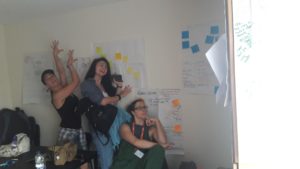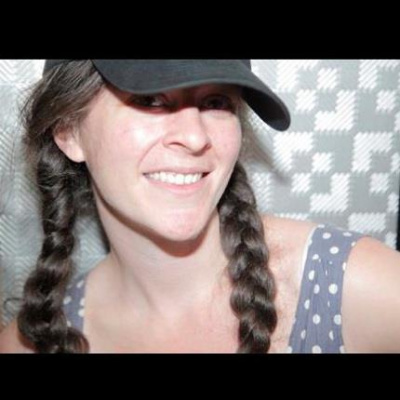Seen and Heard – Building a Critical Presence Around Circus Arts
Next month, the third in the #CircusVoices series of opportunities for circus artists to develop their critical practise is taking place in association with Circus City festival in Bristol, UK. Making work is one thing but, it seems, talking about that work or communicating on a wider scale is another. Over the last four years I have been growing my mission to create a culture of critical discourse within circus, such as that already established in other arts. The #CircusVoices residencies, which began at Edinburgh Festival Fringe in 2016, are a key progression of these aims.
When I first began writing about circus performance, it was as a result of several years of frustration at the black hole of information surrounding circus artists and their work. Several years of irritation at never being able to find any details or reviews of the shows and companies I was interested in. I had begun my career as an actor and theatre maker and, in 2008, found myself suddenly immersed in circus after applying for a 2-week volunteer residency with NoFit State Circus – then on tour with their show Tabù –in order to learn acrobatic skills that would enhance my performance resume.
In the daytimes, I would train aerial, tightwire, German wheel… the various disciplines the artists performed in the show – in between site chores such as cleaning toilets, cooking meals or putting up fencing. When the lights went down, I would sell programmes or work the bar inside the tent, watching the promenade performance from all angles, night after night. Needless to say, the fortnight extended across the whole summer season, and the tour took me through England and Wales as well as to the international Festival Circolo (then Circo Circolo) in the Netherlands. Here, I realised that NoFit State were not the only company reinventing circus beyond what I had previously imagined, limited as I was by popular cultural depictions of exclusively classical circus traditions.
The next year, I found myself back on tour again, living in a tent that I pitched among the caravans at each stand, visiting more shows, taking in more of what the 21st Century circus world has to offer. My friends would occasionally mention other shows that they had seen, or worked on, but when I tried to look them up the internet greeted me with a big fat nothing.
Away from the circus, I moved out of my shared house into a converted passenger coach, kitted out to act as a travelling show, spilling performers out of its back end and into public parks. I was still making theatre, albeit with a distinct circus influence, but then fate struck. A fire, started anonymously, destroyed everything I had of my career and life until then. It seems I wasn’t destined to live in a theatre-bus after all. Rebuilding my career seemed like an insurmountable task so, instead, I decided to try something new.
I’ve always had a secret passion, and some skill, for writing, so I turned in this direction, writing reviews for a local theatre festival. Around the same time I realised that there might be other people who were equally frustrated by the lack of critical information on circus arts, and that just because it didn’t exist yet, didn’t mean it shouldn’t. I started The Circus Diaries as a tentative blog and now fate, playing a kinder hand, stepped back in to offer me a place on an Unpack The Arts residency. This EU funded scheme invited arts journalists to circus festivals around Europe to discover what it means to document circus, through curated conversation with artists, directors, and critics. It was exactly the confirmation I needed that I was on the right track, and that there were others like me who cared whether a public resource of contemporary circus material existed.
This safe environment, where negative responses can be expressed and explored without fear of career repercussions, is a vital part of building strong and distinct creative voices.
I use the word ‘contemporary’ in its original sense of ‘current’, recognising that to explore the industry fully, records must include those circus companies working today in both classical and post-classical forms. The different styles influence and impact on each other, and to focus exclusively on either is to miss the bigger picture.
While my initial impulses, however, were to provide a resource for other circus researchers and practitioners, I soon realised that I couldn’t do it all alone. At first I naively thought that just meant encouraging other circus artists to write reviews, as part of the problem is outsiders commenting on circus work in ignorance or apathy, failing to give any valuable information to those already involved. I soon discovered, though, that the root goes deeper than that, as circus artists have rarely been encouraged to look at their work or that of their peers in a critical manner beyond technical precision. Time and again at industry events and gatherings I heard the same complaints from circus practitioners: ‘We don’t have the vocabulary’; ‘We don’t share a language’; ‘I don’t know how to articulate my thoughts.’
To encourage a culture to develop where critical conversation becomes a standard part of circus practise, we need to sew the seeds of confidence, and build practical experience of critical engagement. Inspired by my time on the Unpack The Arts project, I flipped the concept on its head – instead of inviting arts journalists to learn about circus, I’m now helping circus artists to develop critical practise, through residencies at festivals where we watch work, discuss it together and explore ways to creatively construct our evaluations. These #CircusVoices programmes invite anyone working within the sector to apply, giving the opportunity not just to see a range of circus-based shows but to discuss them intensively with like-minded, informed enthusiasts from different backgrounds, discovering new outlooks and possibilities. This safe environment, where negative responses can be expressed and explored without fear of career repercussions, is a vital part of building strong and distinct creative voices. The flip side, of course, is figuring out why we love the things we love, to further inform the work participants go on to make in their careers.
 The first point on the agenda is always the question, ‘What is critical discourse?’The value of appropriate languages and vocabularies to discuss work goes far beyond the traditions of a newspaper review column, just as circus now reaches far beyond simply the classical mode of entertainment. We live in a digital age of YouTube and Podcasts, yet I can’t count five channels of any regular circus influence. Industry seminars in different places regularly repeat the same concerns about marketing and production. A lot of time and energy goes into blindly reinventing the wheel in performance, when a global body of shared knowledge would reduce this redundancy and fuel progress. Establishing the value of all these different facets of communication helps dissolve preconceptions that critical thought is limited to written reviews of shows.
The first point on the agenda is always the question, ‘What is critical discourse?’The value of appropriate languages and vocabularies to discuss work goes far beyond the traditions of a newspaper review column, just as circus now reaches far beyond simply the classical mode of entertainment. We live in a digital age of YouTube and Podcasts, yet I can’t count five channels of any regular circus influence. Industry seminars in different places regularly repeat the same concerns about marketing and production. A lot of time and energy goes into blindly reinventing the wheel in performance, when a global body of shared knowledge would reduce this redundancy and fuel progress. Establishing the value of all these different facets of communication helps dissolve preconceptions that critical thought is limited to written reviews of shows.
I have recently begun lecturing a theory module on performance analysis within the Degree programme at the National Centre For Circus Arts in London, and the chance to embed these critical processes into the training of a new generation of circus artists is hugely exciting progress. In the meantime, I will continue to evolve my #CircusVoices workshops as action research into how best we can speak about circus to strengthen the industry from the inside.
For more details about #CircusVoices programme visit Circus City festival.
All photos courtesy of Katharine Kavanagh...
Do you have a story to share? Submit your news story, article or press release.




